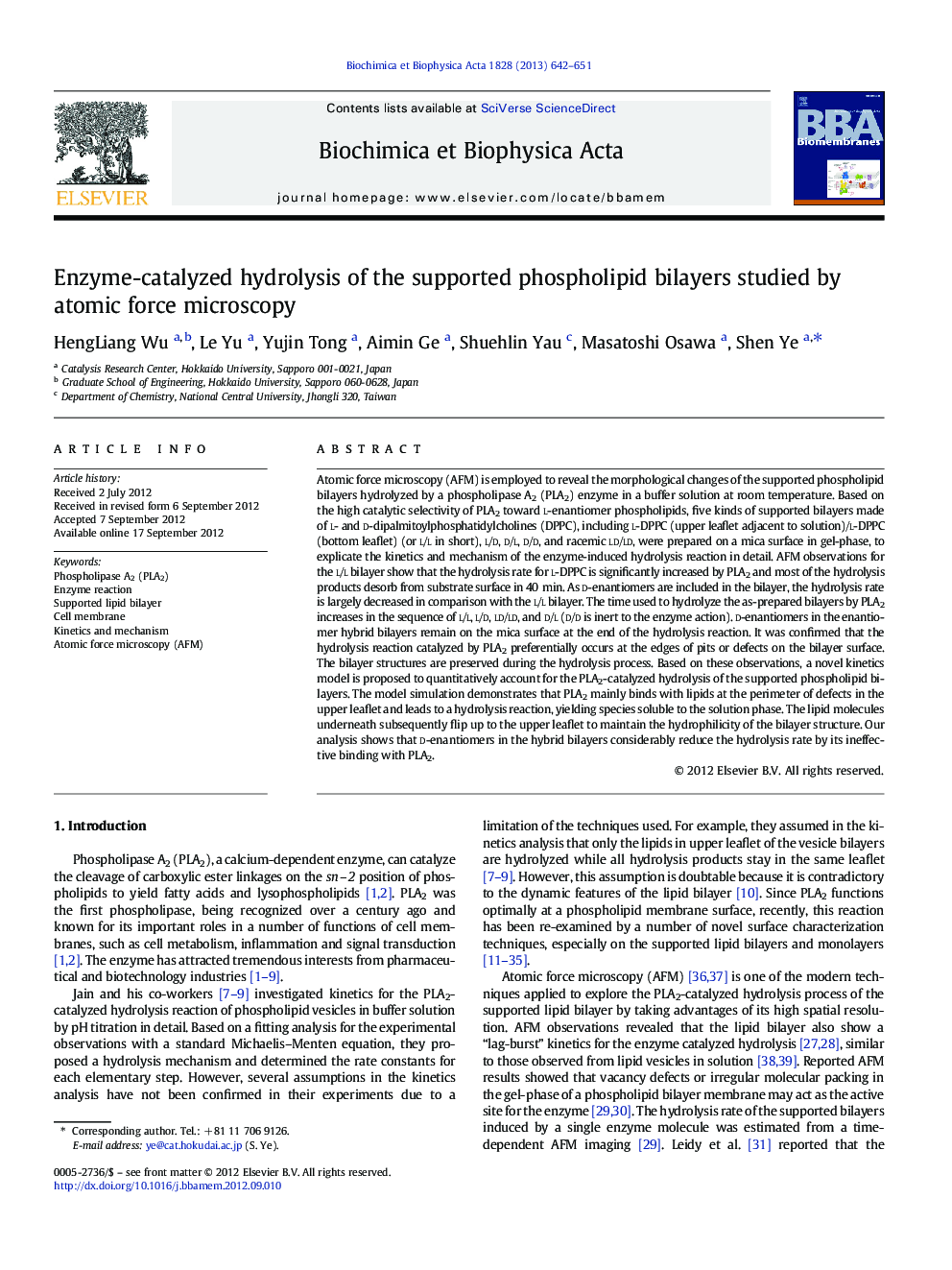| کد مقاله | کد نشریه | سال انتشار | مقاله انگلیسی | نسخه تمام متن |
|---|---|---|---|---|
| 1944402 | 1053210 | 2013 | 10 صفحه PDF | دانلود رایگان |

Atomic force microscopy (AFM) is employed to reveal the morphological changes of the supported phospholipid bilayers hydrolyzed by a phospholipase A2 (PLA2) enzyme in a buffer solution at room temperature. Based on the high catalytic selectivity of PLA2 toward l-enantiomer phospholipids, five kinds of supported bilayers made of l- and d-dipalmitoylphosphatidylcholines (DPPC), including l-DPPC (upper leaflet adjacent to solution)/l-DPPC (bottom leaflet) (or l/l in short), l/d, d/l, d/d, and racemic ld/ld, were prepared on a mica surface in gel-phase, to explicate the kinetics and mechanism of the enzyme-induced hydrolysis reaction in detail. AFM observations for the l/l bilayer show that the hydrolysis rate for l-DPPC is significantly increased by PLA2 and most of the hydrolysis products desorb from substrate surface in 40 min. As d-enantiomers are included in the bilayer, the hydrolysis rate is largely decreased in comparison with the l/l bilayer. The time used to hydrolyze the as-prepared bilayers by PLA2 increases in the sequence of l/l, l/d, ld/ld, and d/l (d/d is inert to the enzyme action). d-enantiomers in the enantiomer hybrid bilayers remain on the mica surface at the end of the hydrolysis reaction. It was confirmed that the hydrolysis reaction catalyzed by PLA2 preferentially occurs at the edges of pits or defects on the bilayer surface. The bilayer structures are preserved during the hydrolysis process. Based on these observations, a novel kinetics model is proposed to quantitatively account for the PLA2-catalyzed hydrolysis of the supported phospholipid bilayers. The model simulation demonstrates that PLA2 mainly binds with lipids at the perimeter of defects in the upper leaflet and leads to a hydrolysis reaction, yielding species soluble to the solution phase. The lipid molecules underneath subsequently flip up to the upper leaflet to maintain the hydrophilicity of the bilayer structure. Our analysis shows that d-enantiomers in the hybrid bilayers considerably reduce the hydrolysis rate by its ineffective binding with PLA2.
Figure optionsDownload high-quality image (276 K)Download as PowerPoint slideHighlights
► Hydrolysis of a DPPC bilayer catalyzed by PLA2 enzyme is studied by AFM and simulation.
► Hydrolysis products are desorbed while lipid bilayer structures are preserved during the reaction.
► Lipid enantiomers are employed to analyze kinetics and mechanism for the PLA2-catalyzed hydrolysis reaction.
► Enzyme-induced flip-up process plays important roles in the hydrolysis reaction.
Journal: Biochimica et Biophysica Acta (BBA) - Biomembranes - Volume 1828, Issue 2, February 2013, Pages 642–651